Forty mpg. It's a number you've probably heard on TV commercials or seen on billboards. After all, just five years ago, there were only three cars that could make this lofty claim for fuel efficiency on the open road, and two of them were hybrids and the other was the Smart car. Fast-forward to 2012 and there are now 24 models that claim to get EPA fuel economy of 40 mpg highway, and 15 of them aren't even hybrids.
We gathered six of these cars that the EPA says get precisely 40 mpg on the highway — none of them hybrids — and tested them in the real world. Is it really possible to achieve that big four-oh? Will each car really return exactly 40 mpg on the highway, as the EPA numbers indicate? And how will they do away from the highway in the sort of suburban environment in which most Americans drive every day?
This is the 40 MPG Challenge. Six cars, 700 miles and your choice of energy drinks from the gas mart.
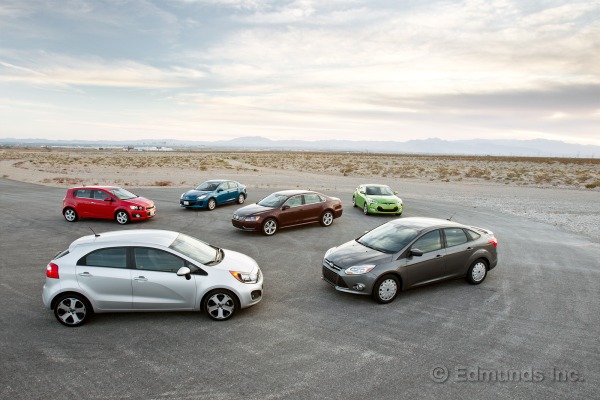
The Cars
Variety prevails in our selection of 40-mpg cars. From six different car brands we have two subcompact hatchbacks, two compact sedans, a sporty coupe and a large family sedan. Each is also a class leader in its own right. We think this disproves the notion that you have to drive a lethargic, cramped penalty box in order to get fuel-sipping mpg. Plus, each of these cars can be had for a reasonable price, another automotive breakthrough in the last five years. After all, a hybrid might easily get 40 mpg, but it customarily carries a sizable cost mark-up to pay for its exotic technology.
The Chevrolet Sonic ($18,695 as tested) is one of the most appealing subcompact cars thanks to its fun-to-drive nature. Besides its lively handling, the Sonic offers fun from its optional turbocharged 1.4-liter engine. Such performance upgrades almost always come with a fuel economy trade-off, but in this case, the turbo actually achieves better fuel economy than the standard four-cylinder. Pairing it with the six-speed manual transmission gets you to 40 mpg.
Next up is the Hyundai Veloster ($21,395 as tested), which is subcompact in size, although its strange three-door hatchback body style and stranger styling prove that you can drive something both funky and fuel-efficient. Sadly, the Veloster's optional turbocharged engine can't match the Sonic's fun-yet-40 trick, so we had to stick with the standard 1.6-liter four-cylinder (shared with the Rio) that hits 40 mpg when paired with a six-speed manual transmission.
The Kia Rio 5 ($18,450 as tested) is another one of our top choices in the subcompact class. Despite its modest price, the Rio offers a stylish, relatively well-appointed cabin with an ample list of features. And unlike the other cars in this test, the Rio boasts 40 mpg highway regardless of transmission or body style. Also included on the Rio is an additional Active Eco mode, which slightly alters the calibration of the engine and transmission response to optimize fuel economy.
Moving up a segment, we find the Mazda 3i ($24,495 as tested) Grand Touring sedan and its highly advanced "Skyactiv" four-cylinder engine and six-speed automatic transmission introduced for 2012. In the past, the Mazda 3 has always impressed with its eager driving dynamics and overall refinement, but it was always one of the least fuel-efficient vehicles in its class. No longer.
The Ford Focus ($20,660 as tested) is also one of our top choices in the compact segment. Its powerful, fuel-efficient four-cylinder engine is a key element of the car's customer appeal and can achieve 40 mpg when you opt for the $495 Super Fuel Economy (SFE) package. We're not sure the SFE is worth the extra dough, but 40 is still 40.
And finally, the Volkswagen Passat TDI ($28,665 as tested) is the black sheep in this group. While the other cars are small and fueled by 87-octane gasoline, the Passat is a comparatively enormous family sedan that must visit the green pump for its diesel fuel.
(It's important to note that you must usually buy a specific engine, transmission or even body style to achieve 40 mpg. At the end of this article, we provide more specifics on each 40-mpg model of these cars.)
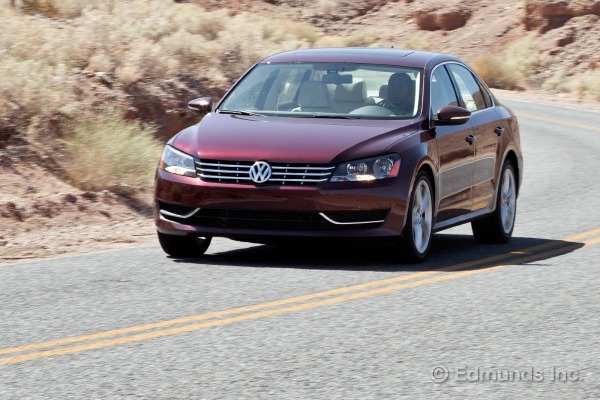
The Country Highway Route
If a car is going to achieve its EPA highway estimate, our "country highway" driving route from Fontana, California, to Las Vegas through Death Valley should be its best chance to do it. Featuring relatively modest highway speeds of between 45 and 65 mph, this route is a good analog for rural highways across the country and in the past has generated fuel economy numbers that have exceeded EPA estimates. (We tested in mid-April, avoiding extreme temperatures.)
* Based on in-car fuel economy gauge
True to form, the Volkswagen Passat TDI, Mazda 3i and Ford Focus SFE all topped 40 mpg. The Focus was not equipped with cruise control (it's an option, even in the SFE package), which might have cost it a few additional tenths of an mpg. It's also worth noting that since the Passat uses pricier diesel fuel (roughly 20 cents extra per gallon), it was only the third cheapest car to fill up despite getting the best fuel economy.
Nevertheless, we confirmed that you really can get 40 mpg in the real world with three of these cars. We also confirmed that just because the EPA estimates six different cars achieve the same fuel economy, it doesn't mean the cars are equally fuel-efficient, even when driven at the same time on the same route and in the same conditions.
And as we discovered in last year's Fuel Sipper Smackdown 4, corporate cousins Hyundai and Kia are not meeting their lofty estimates of highway fuel economy in our testing. The Rio and Veloster certainly came close and are without question what we'd consider fuel-efficient, but if they couldn't hit the big 4-0 in these conditions, we think it would be awfully hard for them to measure up for regular folks in the real world.
So what about the Chevy Sonic? Well, it was a subjective champ on this driving route, as its torquey turbocharged engine required fewer downshifts into fuel-swilling shorter gear ratios as the elevation changed and we climbed long grades to higher altitude. Unfortunately, a faulty gas pump in Las Vegas caused an overfill that ruined our testing numbers for the Sonic on this particular leg of the route, as well as the next suburban route. However, we know that the Sonic's trip computer is usefully accurate when determining ongoing fuel economy, since we actually own this Chevy Sonic as part of our long-term test fleet. As such, we're confident the car came close to the trip computer's estimate of 41.3 mpg, although obviously we can't know for sure.
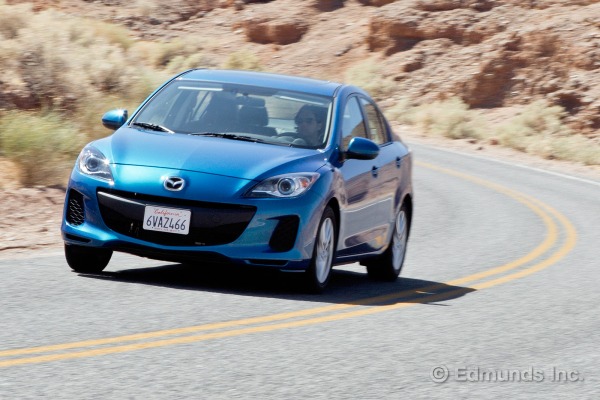
The Suburban Route
If your idea of city driving involves commuting through gridlock in a mega city like Los Angeles or Chicago, then you should expect fuel economy well south of even the EPA's "city" estimate. However, for the great many who live in less populated metropolitan areas and do much of their driving in the suburbs, our test results collected from 180 miles of driving around the greater Las Vegas area should be fairly representative of real-world mpg.
* Based on in-car fuel economy gauge
Here the Volkswagen Passat TDI was a true shocker, managing an incredible 43 mpg. We figure a combination of the torque-rich diesel engine, relaxed acceleration from traffic lights and long stretches of suburban speeds of 40 mph added up to exceptional efficiency. To be honest, we were a little skeptical about this result at first, but we're confident about its accuracy (skip ahead to the next section if you'd like to see why).
The other surprise here was the Hyundai Veloster. Although this odd green hatchback (which we nicknamed Kermit) was disappointing on the highway, its 31.3 mpg on the suburban route was more than 3 mpg better than its EPA city estimate of 28. The Sonic was even better, judging by its in-car data. In both cases, credit the hyper-conservative shift light included with the manual transmission, which encourages efficient driving as well as glacial acceleration (especially in the Veloster). We ignored it whenever traffic dictated a more rapid pace, but still managed excellent fuel economy.
The Ford and Mazda also returned similarly impressive results, but their technologically advanced automatic transmissions managed to make them efficient without succumbing to the need for lethargic acceleration. Even the last-place Rio managed to hit its EPA-estimated nail on the head.
As much as highway fuel economy numbers are touted in advertisements, these numbers from our own urban testing are far more indicative of what you can expect on a daily basis from the car in your driveway. Plus, our editors continued to be pleased with these cars despite spending a day tediously driving 180 miles within the not-so-picturesque confines of Las Vegas.
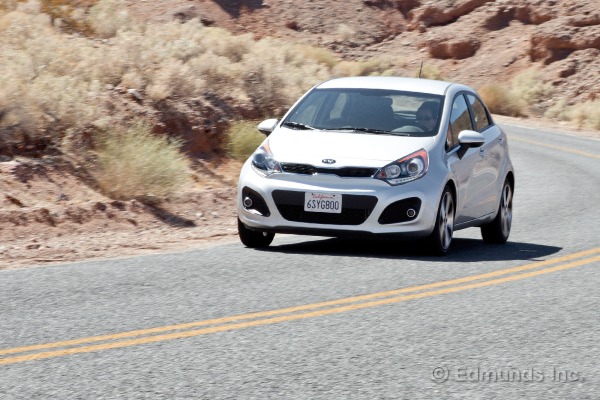
The Interstate Highway Route
You read that right. The Volkswagen Passat TDI achieved 51.7 mpg while averaging 70 mph on our final testing route — a simple, straight shot on Interstate 15 from Las Vegas back to Fontana. Not only was this 51.7 number obviously better than the Passat's EPA estimate, but it was also better than indicated by its in-car MPG meter and its performance on the country highway route. TDI engines are known for doing better than their EPA estimates, but quite frankly, we didn't believe the result and later actually drove back to Las Vegas to retest the car on the same driving route. Lo and behold, we got essentially the same result, which is incredible.
As for the other cars, each failed to achieve their EPA estimates. While our rural highway route proves 40 mpg is possible, our Interstate route shows that 40 mpg is unlikely in a driving environment most people would envision when reading the word "highway."
Nevertheless, you can see the relative differences between these cars that supposedly get the same highway fuel economy. For instance, the Rio and Veloster are about 4 mpg less efficient out on the open road than the Mazda 3i, regardless of what the number before "mpg" might say.
Indeed, the smallest cars here did not fare well, including the Sonic, which was filled up and documented properly without event this time. Yet each proved to be a solid, stable highway car despite its relatively diminutive size.
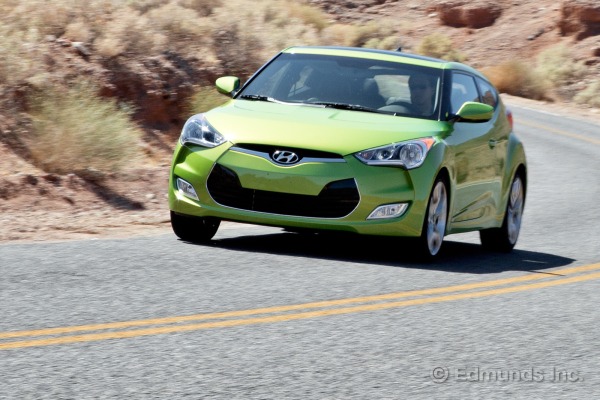
And the Winner Is...
*Based on in-car fuel economy gauge
By now, it shouldn't be surprising that the Volkswagen Passat TDI ran away with this test even when the higher cost of diesel fuel is put into the equation. When you consider its well-equipped cabin, refined driving manners and grand size, the Passat's performance is even more impressive. Three of our editors selected it as the car they would personally buy despite its highest as-tested price. "It's a roomy, comfortable and stylish sedan with more than adequate performance that you can just drive normally and still get 40 mpg," said Automotive Editor John DiPietro. "It's the most expensive car here, but it's a lot of car for the money." And while the Passat is obviously not really a competitor for the other vehicles in this test in anything other than mpg, it deserves consideration by those who want a family sedan, even a family sedan with a hybrid powertrain.
The Mazda 3i Grand Touring proved the merits of the Skyactiv engine and transmission technology. To achieve its frugal results, there are no shift lights to obey (Veloster and Sonic), no Eco buttons to push (Rio), no pricier diesel fuel to seek out (Passat) and no special fuel economy package to buy (Focus). The Mazda 3i not only was frugal but also lively enough in both power and handling to keep our drivers entertained. Of the two compact sedans in this test, four of our six editors picked the Mazda 3i as the one they'd take home.
And yet the Ford Focus SFE still managed to collect its share of accolades. "Even though our tester was basically a stripper model, the Focus feels like a sophisticated machine," said Automotive Editor James Riswick. "The ride is comfortable and the cabin's quiet, and yet the car is also engaging and fun. I'd buy the Ford, but would skip the SFE package." Indeed, most people won't opt for the SFE, which means they shouldn't expect precisely the same fuel economy. Still, the standard Focus with its six-speed automated manual transmission returns only 2 mpg fewer than the Focus SFE in the EPA's highway and combined driving cycles. And that doesn't add up to much of a cost difference over the course of a year.
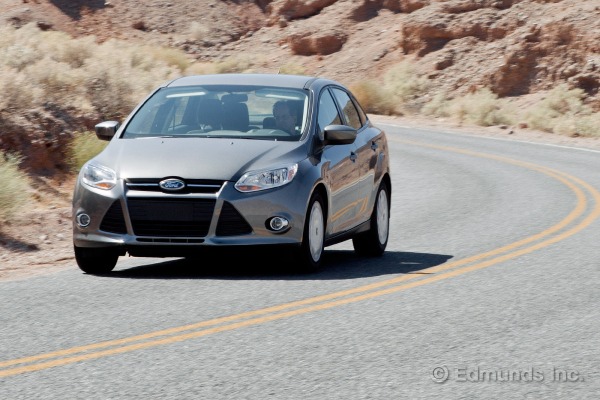
The Hyundai Veloster just managed to eke by its Rio corporate cousin, which was surprising given their EPA ratings. However, the Veloster's performance goes to show that a manual transmission in the hands of a prudent driver can achieve superior fuel economy. Sure, it takes more effort to do so, but certain folks will take pleasure in the challenge — count us among them. The Veloster also garnered plenty of attention from everyone around us, unlike so many unforgettable fuel sippers of the past. While some thought the Veloster has a uniquely cool vibe, others like Features Editor Carroll Lachnit noted, "It needs to return to the swamp from which it came."
As for the Kia Rio, it drew lots of praise from our six editors. "The Rio just felt polished and put-together," noted Automotive Content Editor Warren Clarke. "Everything about it felt more expensive than its price tag suggests. And I love those Kia styling cues, both inside and out." At the same time, it fell short of its lofty fuel economy expectations. As Lachnit noted, "Hyundai and Kia should back off touting 40 mpg and just let the cars speak for themselves."
Finally, we can't be sure how the Chevrolet Sonic would have stacked up in this group because of faulty Chevron pump No. 6. Whereas confirming the VW Passat's performance on the Interstate route was logistically feasible for our testing team, redoing the entire 9-hour Death Valley drive and 180 miles of city driving was not. Plus, conditions would be different and the results not comparable to the other cars.
However, there's no denying the Sonic's general ability to sip fuel, and we really appreciated its turbocharged engine and sharp handling. "The Sonic is great because it can be a fuel-sipper one minute and a sparky little hot hatch the next," Riswick said. "It allows you to decide which personality you want, and something about that seems very appropriate for an American car." Since this Chevy Sonic resides in our long-term test fleet, we will measure its fuel economy over the course of the next year and report the findings in our Long-Term Test section.
The Final Say
In the end, we answered the questions we set out to answer with the 40 MPG Challenge. We know which cars hit the mark and which ones don't. We know that 40 mpg EPA highway isn't easy to achieve on the real-world American highway. And we know that being small doesn't necessarily make a car fuel-efficient.
Perhaps we should have added another question: How much money will you save when you pick one of these fuel sippers over another? Well, take a look at the estimated yearly fuel costs based on our findings. There's only a $255 difference between the most frugal Passat and the least frugal Rio. It was only $95 between the Rio and Mazda 3. In other words, differences in fuel cost diminish when the mpg numbers rise. For more information about the reasons, we suggest reading "The Truth About Fuel Consumption."
Whether a car achieves 38 mpg or that all-hallowed 40 mpg, the difference won't have as much impact on your wallet as you might have hoped. So once you make your choice about the kind of general fuel economy that you want from your car, we ultimately recommend you buy the best fuel-sipping car that meets your needs. As we discovered, it's easier than ever to find one that does.
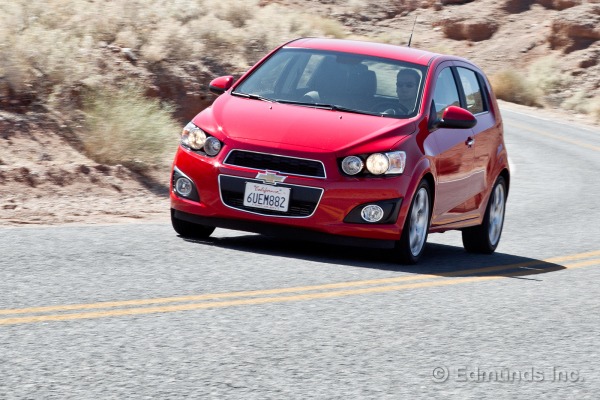
Addendum: How To Get 40 MPG From Each Car
Like most of the other cars here, not every model in the Chevy Sonic lineup gets that as-advertised 40 mpg. To get the magic number, you have to pay extra for the turbocharged 1.4-liter four-cylinder that's available in the Sonic only when it has either the LT or LTZ trims, although you also get that extra wallop of torque that makes the Sonic the quickest car in its class. The six-speed manual transmission is also required, since the automatic will drop you back to "only" 37 mpg. It makes no difference whether you go for the hatchback body style we tested or the available sedan.
If you want 40 mpg, it also really doesn't matter which Kia Rio you buy, since they all are rated at an EPA-estimated 40 mpg highway. The manual transmission will return 1 mpg EPA combined more than our test car with its automatic transmission, but otherwise all Rio sedans and hatchbacks are created equal.
The Hyundai Veloster earns an EPA rating of 40 mpg highway only when equipped with its standard 1.6-liter four-cylinder engine and six-speed manual transmission. A six-speed automatic is optional, along with a turbocharged four-cylinder that can be paired with either transmission, although the fuel economy rating is different, of course.
The Mazda 3 is offered in a dizzying array of variations, including two body styles, four engines, five transmissions and multiple trim levels. To get the 40-mpg rating, you must select 3i Touring or 3i Grand Touring trim, a sedan body style and the six-speed automatic transmission. The hatchback and six-speed manual will be in the same fuel economy ballpark, but fall short of 40 mpg. All of these efficient Mazda 3s can be identified by the Skyactiv badge on their trunks.
In order for the Ford Focus to achieve 40 mpg, you must get its six-speed automated manual transmission and pay $495 for the special Super Fuel Economy package that adds a rear spoiler, low-rolling-resistance tires and some aerodynamic but pretty hideous plastic wheel covers. Rear disc brakes are also added.
The Volkswagen Passat TDI is the only car here that is available in an even more fuel-efficient version since it also comes with a manual transmission, but we expect only a scant few buyers are likely to opt for the manual transmission that brings with it a 43-mpg highway rating. The Passat can also be had with a pair of less-efficient gasoline engines: a 2.5-liter five-cylinder and a 3.6-liter V6. We'd skip both of them and go for the truly impressive TDI.